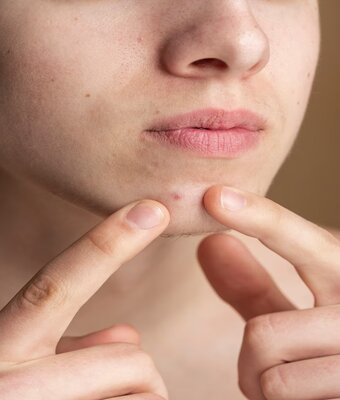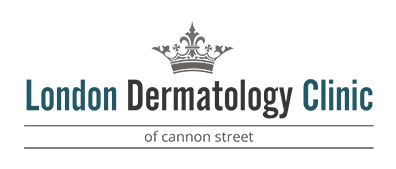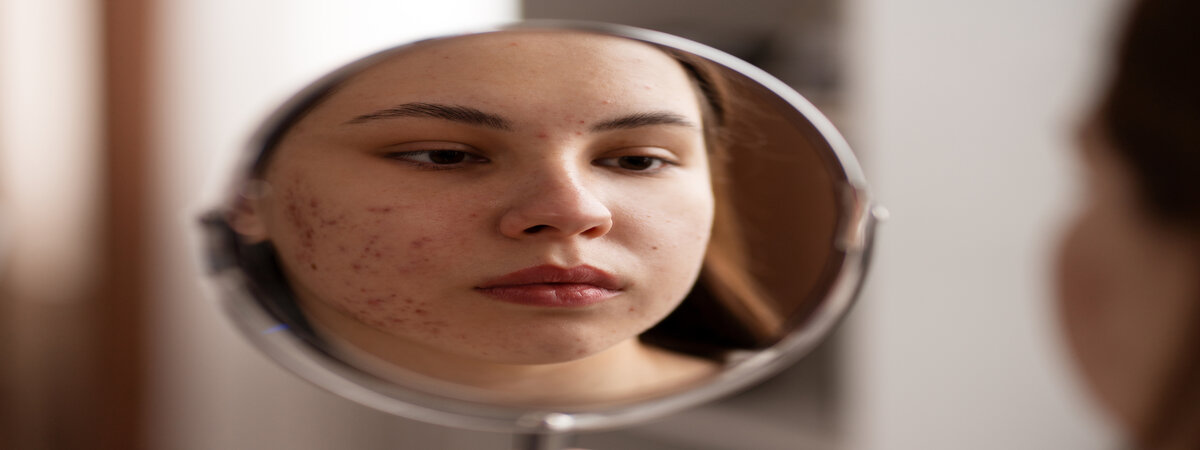
Fungal Acne: What You Need to Know
Fungal acne is a term often used colloquially, but the medical name for this condition is Malassezia folliculitis or Pityrosporum folliculitis. This skin issue is frequently under-recognized and can be easily mistaken for regular acne by the untrained eye. In some cases, it can even coexist with typical acne, meaning a person might require two simultaneous diagnoses to address both conditions effectively.
This condition tends to be more prevalent during warmer weather or among individuals who exercise frequently, as both scenarios can exacerbate the factors contributing to fungal acne. Our dermatologists frequently encounter cases of Malassezia folliculitis in clinical practice, emphasizing the importance of accurate diagnosis and appropriate treatment.
What Does Fungal Acne Look Like?
Malassezia folliculitis typically appears as small red spots or pustules measuring 1–2 mm in size. These spots are distinct because they are “monomorphic,” meaning all the blemishes look very similar to each other. Common areas where these spots appear include:
The forehead
The hairline
The upper back
The chest
A notable symptom is itching, which occurs in approximately 65% of those affected. This is a significant difference from regular acne, which is generally not associated with itching. Recognizing these symptoms is crucial for distinguishing fungal acne from other skin conditions.
Why Does Fungal Acne Occur?
This condition is caused by a yeast known as Malassezia, a fungus that naturally resides on the skin as part of its microbiome. While harmless for most people, in certain individuals who are susceptible, Malassezia can contribute to skin issues such as folliculitis and seborrhoeic dermatitis.
Factors that can increase the likelihood of Pityrosporum folliculitis include:
Humidity and warm climates
Excess sweating
Oily skin
Occlusive skincare products or sunscreens
Prolonged use of antibiotics or steroids
A suppressed immune system
Understanding these triggers can help in managing and preventing flare-ups of fungal acne.
How Is It Treated?
Correctly diagnosing fungal acne is critical, as it requires a different treatment approach compared to regular acne. In fact, common acne treatments, such as oral antibiotics, can worsen Malassezia folliculitis. For this reason, differentiating between the two conditions is essential before starting any therapy.
The standard treatment typically involves:
Oral Antifungal Medications: These are often more effective than topical treatments and are prescribed to address the underlying fungal infection.
Topical Maintenance Therapy: Shampoos containing selenium or ketoconazole 2% are commonly used long-term to prevent recurrence.
It is important to note that fungal acne has a tendency to recur, even after successful treatment. Maintenance therapy is vital for keeping the condition under control over time.
Final Thoughts
Pityrosporum folliculitis can closely mimic acne, leading to potential confusion and ineffective treatments. The key to managing this condition lies in an accurate diagnosis and understanding that fungal acne requires a different therapeutic approach than regular acne.
In some cases, individuals may suffer from both fungal acne and regular acne simultaneously, necessitating a tailored treatment plan that addresses both conditions effectively.
If you are unsure about the type of acne you are experiencing, seeking advice from a health professional such as your GP or our dermatologists can make a significant difference in achieving clear and healthy skin. Accurate diagnosis and appropriate care are essential steps in managing this often-overlooked condition.
FAQ
Is fungal acne contagious?
No, fungal acne is not contagious. The yeast that causes Malassezia folliculitis is naturally present on everyone’s skin as part of the microbiome. The condition arises when this yeast overgrows, which is influenced by individual susceptibility and certain triggers.
Can diet affect fungal acne?
While no direct link has been established, diets high in sugar and carbohydrates may potentially worsen fungal acne for some people. These foods can increase the growth of yeast in the body, which might exacerbate the condition. Maintaining a balanced diet and staying hydrated can help support overall skin health.
Can fungal acne go away on its own?
In some cases, mild fungal acne may resolve on its own if triggers like humidity or sweat are reduced. However, moderate to severe cases often require targeted antifungal treatments to fully resolve and prevent recurrence.
Does makeup make fungal acne worse?
Yes, certain makeup products can worsen fungal acne, especially those that are heavy, occlusive, or contain oils. Opt for non-comedogenic, lightweight, and oil-free formulations to reduce the risk of exacerbating the condition.
Is fungal acne seasonal?
Fungal acne can be more common during warmer months or in tropical climates due to increased sweating and humidity, which create an ideal environment for Malassezia overgrowth. It can also flare up in people who exercise frequently or wear tight, non-breathable clothing.
Can over-the-counter treatments help fungal acne?
Some over-the-counter products, such as shampoos containing ketoconazole, selenium sulfide, or zinc pyrithione, can be used as topical treatments. However, oral antifungal medications prescribed by a dermatologist are often necessary for more severe cases.


